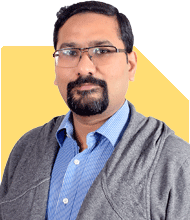Aashish Sood |127 Answers |Ask -Follow
CAT, Management Expert - Answered on Jun 16, 2023
He also mentors management student hopefuls for the group discussion and personal interview rounds that follow competitive examinations.
He has appeared for CAT seven times since 2016 and scored in the 99.9 percentile.
Sood has 16 years of work experience as a management consultant, strategy consultant and research associate.... more

Hi, my sin is joining VIT Vellore for b tech in mechanical engineering. Please let us know how is the placement services in the core field of mechanical than the other fields.
Do you want to convince your son that he should choose core mech field placement over IT services?
Do you want to convince yourself that you have made the right choice?
There is no better or worse situation here. Each profile has its own ups and downs.
While the core field of mechanical engineering often has good placement opportunities, it's also worthwhile for students to explore interdisciplinary roles or consider pursuing higher education to specialize in a specific area if they have a particular interest. Additionally, actively participate in extracurricular activities, projects, and competitions related to mechanical engineering to enhance their profiles and stand out to potential employers.
Lastly, it's always advisable for students to regularly check the placement statistics and reach out to the placement cell at VIT Vellore for the most up-to-date information regarding the placement services and opportunities in the mechanical engineering field.
Dr Dipankar Dutta |1841 Answers |Ask -Follow
Tech Careers and Skill Development Expert - Answered on Dec 14, 2025
Nayagam P P |10854 Answers |Ask -Follow
Career Counsellor - Answered on Dec 14, 2025
Radheshyam Zanwar |6744 Answers |Ask -Follow
MHT-CET, IIT-JEE, NEET-UG Expert - Answered on Dec 14, 2025
Radheshyam Zanwar |6744 Answers |Ask -Follow
MHT-CET, IIT-JEE, NEET-UG Expert - Answered on Dec 14, 2025
Dr Dipankar Dutta |1841 Answers |Ask -Follow
Tech Careers and Skill Development Expert - Answered on Dec 14, 2025
Dr Dipankar Dutta |1841 Answers |Ask -Follow
Tech Careers and Skill Development Expert - Answered on Dec 13, 2025
Dr Dipankar Dutta |1841 Answers |Ask -Follow
Tech Careers and Skill Development Expert - Answered on Dec 13, 2025
Mayank Chandel |2575 Answers |Ask -Follow
IIT-JEE, NEET-UG, SAT, CLAT, CA, CS Exam Expert - Answered on Dec 13, 2025
Radheshyam Zanwar |6744 Answers |Ask -Follow
MHT-CET, IIT-JEE, NEET-UG Expert - Answered on Dec 13, 2025
Mayank Chandel |2575 Answers |Ask -Follow
IIT-JEE, NEET-UG, SAT, CLAT, CA, CS Exam Expert - Answered on Dec 13, 2025


















